{cybersecurity monitoring tools}
best open source defensive cyber security tools
tools that protect companies from network threats
The Rise of Open Source Security Software
10 best open source defensive cyber security tools
The Importance of Open Source Defensive Cyber Security tools in the Digital Age
As digital threats grow increasingly better and more sophisticated, the cybersecurity role can’t be overstated enough. And to help fight against this battle in the world of digital war, is a powerful ally: free open source defensive cyber security tools. These particular type of software not only gives us a chance in fighting back, these tools that protect companies from network threats also embodies a collaborative spirit quintessential for combating evolving cyber threats.
Embracing Openness: The Rise of Open Source Security Software
In the digital age, the term “open source defensive cyber security” has become synonymous with a movement that transcends mere code. It’s about a collective drive to fortify our digital spaces. These are not just tools; they represent a philosophy that champions collaborative enhancement and the democratization of cyber protection.
The Agile Guardians: Open Source Cyber Security Monitoring Tools
The battleground of cyber threats is ever-evolving, and the ability to adapt rapidly is not just beneficial; it’s imperative. Open source cyber security monitoring tools are the vanguard of this adaptability. They provide a canvas for swift, community-driven updates, ensuring defenses evolve as quickly as new threats emerge.
Pioneering Protection: The Innovation of Cybersecurity Tools
Innovation is the heart of open-source cybersecurity tools. Unrestrained by commercial ties, developers have the liberty to experiment and redefine the boundaries of cybersecurity. This freedom has led to groundbreaking tools that are now cornerstones of digital defense.
Challenges in Openness: A Double-Edged Sword
Yet, the open nature of this software is a double-edged sword. It beckons a critical eye and a commitment to maintaining the ecosystem’s integrity. Selecting well-supported projects and contributing back is a responsibility for those who wield these tools.
The Vanguard of Open Source: A Showcase of Key Tools
As we delve into the open-source realm, we spotlight ten pivotal cybersecurity tools. From Wireshark to Security Onion, each embodies the open-source spirit, tackling unique cybersecurity challenges.
Impact and Influence: Beyond the Code
We’re not just reviewing tools but also their seismic impact on cybersecurity. They span network analysis, intrusion detection, and more, forming a comprehensive arsenal for various users.
A Deep Dive into Open-Source Cybersecurity
We’re set to deep dive into each tool, dissecting their applications, and their place in the cybersecurity ecosystem. This is a journey into the heart of open-source cyber defense, an intricate network that’s safeguarding our digital realm.
Table of Contents
10 BEST OPEN SOURCE CYBERSECURITY MONITORING TOOLS
1. Wireshark: The Forensic Expert of Network Traffic

Wireshark, widely looked at as the “gold standard” in network analysis tool. Its also one of the best open source cybersecurity tool on the market. Its primary function is to capture and dissect network packets, offering users a deep dive into the network’s nitty-gritty. Making wireshark one of the most tools used for network security.
Used by most network administrators, and cybersecurity professionals worldwide, Wireshark’s popularity comes from its boatload of features and compatibility with many of today’s network protocols. It’s a go-to tool for diagnosing network issues, monitoring network activities for malicious or unusual behavior, and in educational settings, for teaching the fundamentals of network protocols and communication.
Pros
- Detailed Analysis Capabilities: Wireshark provides an exhaustive level of detail, presenting every bit of data in network packets. This granularity is invaluable for thorough network analysis and troubleshooting.
- Wide Protocol Support: Wireshark supports an extensive range of network protocols, making it versatile and applicable in diverse network environments.
- Strong Community and Support: Being a widely-used tool, Wireshark benefits from a robust community. This results in regular updates, a plethora of online resources, and a significant number of experts contributing to its knowledge base.
- Educational Value: Its detailed analysis capabilities make Wireshark an excellent educational tool for students and professionals learning about network protocols and communication.
Cons
- Complexity for Beginners: The wealth of information Wireshark provides can be overwhelming for beginners. It has a steep learning curve, which can be a barrier for those new to network analysis.
- Resource Intensity: Running Wireshark, especially on busy networks, can be resource-intensive. It requires a significant amount of system resources to capture and analyze large volumes of network data.
- Security Risks: If not used carefully, Wireshark can pose security risks. Capturing sensitive data on networks can lead to privacy concerns and security vulnerabilities if the data is not handled securely.
Conclusion
Wireshark, with its unparalleled depth of analysis and broad protocol support, stands as a titan in the world of open-source cybersecurity tools. While its complexity and resource intensity may pose challenges, its benefits in network analysis, troubleshooting, and education are undeniable. For those willing to scale the learning curve, Wireshark offers an unmatched window into the workings of network traffic.
For a quick walk through of how to install Wireshark on Ubuntu and Windows please see our guide below.
step-by-step guide to installing wireshark on ubuntu
Step 1. Open up your Ubuntu terminal and we’ll need to first run the following commands to update and upgrade our system. This will insure that our system has all the proper package releases. This part can take up to 10-20 mins depending on how much updates are system needs.
sudo apt update
sudo apt upgrade
Step 2. Once our systems are updated we’ll install the wireshark PPA repository with the fallowing commands. Making sure pushing enter after each command. Some of these commands will take some time to run so please be patient.
sudo apt install software-properties-common
sudo add-apt-repository ppa:wireshark-dev/stable
Step 3. Lets run another update to make make sure we have the most updated packages for wireshark.
sudo apt update
Step 4. Now we can run the install for wireshark with the following commands.
sudo apt install wireshark
During the install, you’ll be prompted about giving access non superusers meaning all users or just yourself. I picked just myself since im not too worried about any security issues with wireshark.

Step 5. Once your wireshark install is completed. You can now start up wireshark with the following command.
sudo wireshark &
Please check the link below to see the full walk through for installing on both Windows and Ubuntu.
2. OSSEC: The Sentinel of System Security

OSSEC stands as a robust, open-source Host-based Intrusion Detection System (HIDS). It’s designed to perform log analysis, file integrity checking, policy monitoring, rootkit detection, real-time alerting, and active response. Serving a critical role in the cybersecurity landscape, OSSEC is used by organizations of all sizes for maintaining the integrity of their systems and detecting unauthorized changes or activities.
The strength of OSSEC lies in its ability to monitor multiple systems from a central location, making it a popular choice for system administrators and security professionals overseeing large and diverse IT environments.
Pros
- Comprehensive Monitoring: OSSEC excels in providing detailed monitoring of system activities, including file integrity monitoring, log analysis, and rootkit detection.
- Cross-Platform Compatibility: It is compatible with a wide range of operating systems, enhancing its utility in heterogeneous computing environments.
- Scalability: OSSEC can be scaled to monitor large networks of computers, making it ideal for both small businesses and large enterprises.
- Strong Community Support: Benefiting from a large and active community, OSSEC continually evolves with regular updates and a rich knowledge base.
Cons
- Complex Configuration: Setting up and configuring OSSEC can be challenging, particularly for beginners or those unfamiliar with its intricacies.
- Resource-Intensive: Similar to Wireshark, OSSEC can be resource-intensive, especially when monitoring a large number of systems.
- Limited GUI: While there are third-party GUI solutions available, OSSEC primarily operates through command-line interfaces, which can be a deterrent for users preferring graphical interfaces.
Conclusion
OSSEC is a powerful tool in the arsenal of cybersecurity, offering comprehensive monitoring capabilities across various platforms. While its setup and management might demand a certain level of expertise, the security insights and integrity checks it provides are invaluable for protecting against intrusions and ensuring system compliance. For organizations looking to bolster their defensive cyber security posture, OSSEC stands as a formidable open-source option.
3. Snort: The Vigilant Guardian of Network Traffic
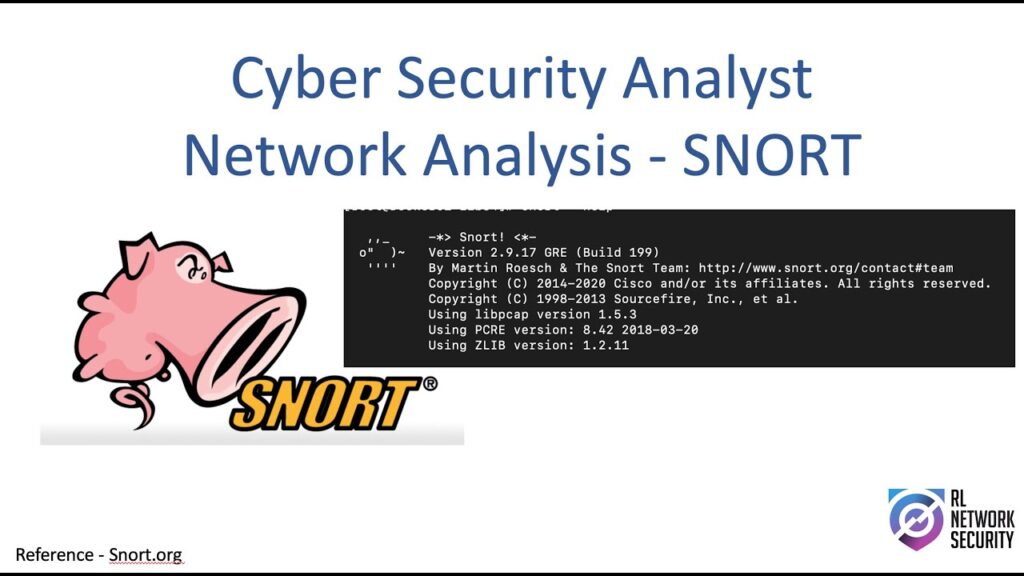
Snort is a renowned open-source network intrusion detection and prevention system (NIDS/NIPS). It’s highly respected in the cybersecurity community for its effectiveness in monitoring network traffic and identifying potential threats. Snort analyzes network traffic in real-time, detecting a wide range of attacks such as buffer overflows, stealthy port scans, CGI attacks, SMB probes, and OS fingerprinting attempts.
Used by both small businesses and large corporations, Snort is versatile in its deployment, serving as a straightforward packet sniffer, a packet logger, or a full-blown network intrusion prevention system.
Pros
- Real-Time Traffic Analysis: Snort’s ability to analyze network traffic in real-time allows for prompt detection and mitigation of threats.
- Customizable Rule Set: Users can define their own set of rules for Snort, enabling tailored security policies and responses to specific threats.
- Wide Community Support: As a widely adopted tool, Snort benefits from a vast community, providing extensive resources, updates, and user-generated rules.
- Flexibility in Deployment: Snort can be deployed in various modes, offering flexibility depending on the specific needs of the network environment.
Cons
- Complex Configuration and Management: Like many powerful tools, Snort requires a significant investment in configuration and ongoing management, which can be challenging for beginners.
- Performance Impact: In high-traffic environments, Snort can impact network performance due to the extensive analysis it performs.
- False Positives and Negatives: Properly tuning Snort is crucial as it can generate false positives and negatives, requiring careful calibration and regular rule updates.
step-by-step guide to installing snort on ubuntu
Step 1. Lets update and upgrade our system to make sure we have the most updated packages.
sudo apt-get update && sudo apt-get upgrade -y
Step 2. Once your system is updated, we can go ahead and run the install command for snort.
sudo apt-get install snort -y
During the install, you’ll be promoted to add in your network range. You can find your network work range by doing ifconfig. My current network range is 192.168.65.0/24

Step 3. Now we’ll need to put our network card into a promiscuous mode. This allows a nic to read and intercept network packet that comes through.
sudo ip link set ens33 promisc on
You can find the name of your nic card by either doing the ip addr or ifconfig command as showen below.
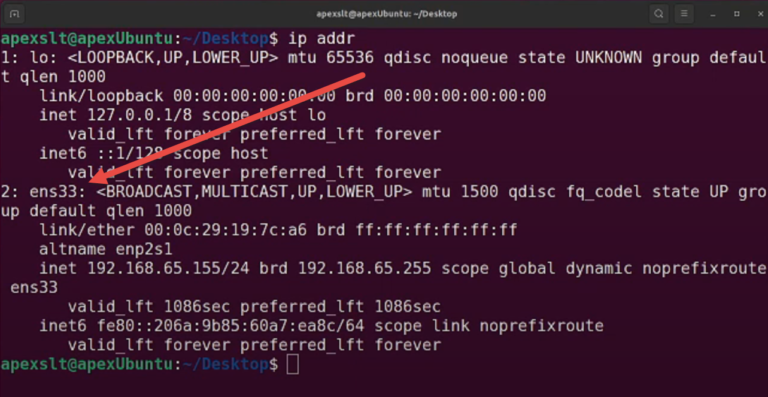
Step 4. Next we’ll need to update snort’s config file to see our network. I used vim for my editor, but you can use anything like nano as well.
sudo vim /etc/snort/snort.conf
We’ll need to edit the snort.conf file and add your network range. You’ll need to edit the ipvar HOME_NET to your address as shown below. Making sure you save after.

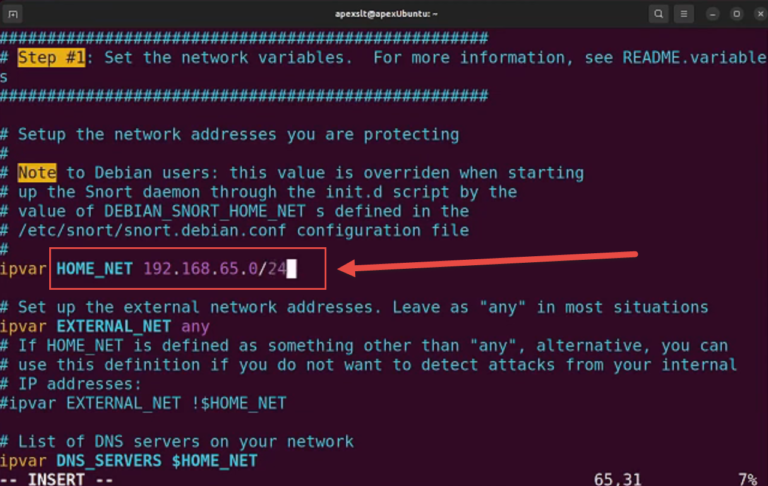
Once saved you are done and you can go ahead and create your first snort rule. Below is the full guide that walks you through the snort install and creating your first snort rule.
Conclusion
Snort stands as a sentinel in the realm of network security, offering robust and real-time monitoring of network traffic. Its customizable nature and the strong support of a broad user community make it a valuable tool for defending against a myriad of cyber threats. While it demands attention to configuration and tuning, the level of security and insight it provides makes it a top choice among the tools of cyber security, especially for organizations seeking a powerful, open-source solution for network intrusion detection and prevention.
4. Metasploit Framework: The Swiss Army Knife of Cybersecurity Penetration Testing4.
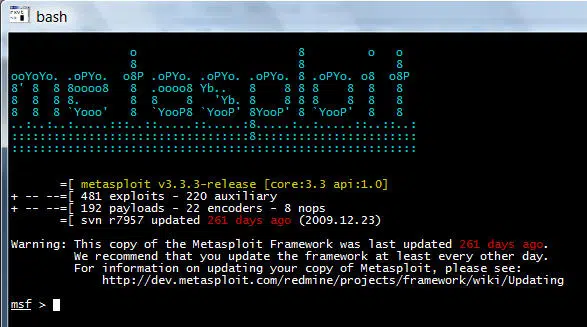
The Metasploit Framework is a highly acclaimed open-source project in the field of cybersecurity. It is primarily used for penetration testing, vulnerability assessments, and developing and executing exploit code against a remote target machine. The tool is indispensable for security professionals and ethical hackers, providing a comprehensive platform for testing system vulnerabilities and verifying the effectiveness of security measures.
Widely used in both offensive and defensive cybersecurity, Metasploit allows users to simulate attacks on their networks to identify vulnerabilities before they can be exploited maliciously. This proactive approach to security makes it a staple in cybersecurity toolkits.
Pros
- Comprehensive Exploit Database: Metasploit boasts an extensive database of known exploits, making it invaluable for identifying system vulnerabilities.
- Versatile Toolset: It offers a range of tools for conducting penetration testing, from scanning to exploit execution, all within a single framework.
- Regular Updates and Community Support: Being open-source, it is regularly updated with new exploits and defenses, with a strong community contributing to its continuous improvement.
- Educational Value: Metasploit is also a fantastic learning resource for those new to penetration testing, offering practical experience in a controlled environment.
Cons
- Complexity for Beginners: The extensive capabilities of Metasploit can be overwhelming for beginners, requiring a steep learning curve.
- Resource Intensity: Like many robust tools, it can be resource-intensive, demanding significant computing resources during scans and attacks.
- Potential for Misuse: Due to its powerful nature, there is always a risk of Metasploit being used unethically. Proper ethical and legal guidelines must be strictly followed.
Conclusion
The Metasploit Framework is a cornerstone in the field of open-source cybersecurity tools, particularly in penetration testing and vulnerability assessment. Its extensive database and versatile toolkit make it an essential resource for identifying and addressing security vulnerabilities. While it demands expertise and ethical usage, its contribution to the strengthening of cyber defense mechanisms is unparalleled. For cybersecurity professionals seeking to hone their skills and fortify their networks, Metasploit offers an exhaustive and dynamic platform.
For a step-by-step on how to install Metasploit check out our youtube below.
Metasploit Framework: The Swiss Army Knife of Cybersecurity Penetration Testing
5. Suricata: The Agile Network Guardian

Suricata emerges as a powerful open-source network security tool, functioning as a Network IDS, IPS (Intrusion Prevention System), and Network Security Monitoring engine. Its capability to process millions of packets per second makes it an invaluable asset in high-traffic network environments. Suricata is known for its high performance, robust threat detection, and extensive logging capabilities.
This tool is widely used by large enterprises, government agencies, and educational institutions to monitor network security, detect intrusions, and prevent unauthorized access. Its versatility allows it to adapt to various network environments, making it a preferred choice for comprehensive network security.
Pros
- High Performance and Efficiency: Suricata is designed for high-speed packet processing, effectively handling large volumes of network traffic without significant performance degradation.
- Advanced Threat Detection: It employs sophisticated techniques like Deep Packet Inspection (DPI) and signature-based detection to identify and mitigate threats effectively.
- Multi-Threading Capabilities: Suricata’s multi-threading architecture allows it to handle large amounts of data efficiently, making it ideal for complex and demanding network environments.
- Active Community and Regular Updates: Suricata is backed by a vibrant community that contributes to its continuous development, ensuring it stays abreast of the latest security threats and trends.
Cons
- Resource Intensive: To handle high network traffic and perform complex analyses, Suricata can be resource-intensive, necessitating robust hardware infrastructure.
- Configuration Complexity: Setting up and optimizing Suricata for specific network environments can be complex and requires a good understanding of network security principles.
- Learning Curve: Though it is powerful, Suricata’s advanced features and detailed configurations present a steep learning curve for new users.
Conclusion
Suricata stands out as a formidable tool in the realm of open-source network security. Its ability to efficiently process and analyze vast amounts of network data, coupled with its advanced threat detection capabilities, makes it a cornerstone in modern network defense strategies. While it demands significant resources and expertise, the level of security insight and protection it offers makes it an invaluable asset for organizations committed to maintaining robust network security.
6. ClamAV: The Open-Source Antivirus Powerhouse
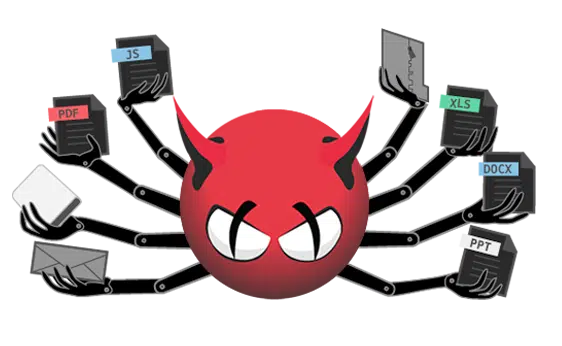
ClamAV is a prominent open-source antivirus engine designed to detect trojans, viruses, malware, and other malicious threats. It’s particularly renowned for its versatility, being used in various scenarios like email scanning, web scanning, and endpoint security. ClamAV is highly favored in both individual and organizational settings, especially where cost-effective yet robust security solutions are needed.
The software is a common choice for server environments, thanks to its compatibility with multiple operating systems and its integration capabilities with mail servers, file servers, and other network endpoints.
Pros
- Wide Malware Detection: ClamAV is equipped with a comprehensive database for malware detection, regularly updated to keep up with new threats.
- Flexibility and Integration: It can be integrated into mail servers for email scanning and into various server setups, enhancing overall system security.
- Strong Community Support: The tool benefits from an active open-source community that contributes to its ongoing development and malware database updates.
- Resource Efficiency: Compared to many commercial antivirus solutions, ClamAV is less resource-intensive, making it suitable for systems with limited resources.
Cons
- User Interface Limitations: ClamAV primarily operates via command line, which might be challenging for users who prefer graphical interfaces.
- Primarily Server-Focused: While versatile, ClamAV is mainly geared towards server use and might not be as user-friendly for personal desktop security needs.
- No Real-Time Scanning in Standard Version: The standard version of ClamAV does not include real-time scanning, a feature often found in commercial antivirus products.
Conclusion
ClamAV stands as a testament to the power and viability of open-source solutions in cybersecurity. Its ability to provide robust virus and malware detection, coupled with its integration flexibility, makes it an essential component in the toolkit of open-source security software. While it may have some limitations compared to commercial products, its effectiveness, resource efficiency, and strong community support make it a top choice for server environments and users seeking a reliable, open-source antivirus solution.
7. GRR Rapid Response: The Agile Incident Response Framework

GRR Rapid Response is an innovative open-source framework for remote live forensics and incident response. Developed by Google, it enables efficient collection and analysis of forensic data, aiding in the rapid response to security incidents. GRR is particularly valuable in large-scale enterprise environments where managing and responding to security incidents across numerous systems is a significant challenge.
The tool is designed to assist in investigating security incidents by remotely accessing and analyzing data from potentially compromised systems, providing vital information needed to understand the scope and impact of security breaches.
Pros
- Remote Live Forensics: GRR enables remote data collection, reducing the response time and disruption typically associated with traditional forensic methods.
- Scalable and Flexible: It is designed to handle large networks and diverse systems, making it highly scalable and adaptable to different enterprise environments.
- Automated Data Collection: GRR automates the process of data collection, allowing for efficient and systematic gathering of forensic data.
- Open Source and Community-Driven: As an open-source tool, GRR benefits from continuous development and contributions from the cybersecurity community.
Cons
- Complex Setup and Operation: GRR’s powerful capabilities come with a complex setup and operational requirements, which might be challenging for organizations without dedicated cybersecurity teams.
- Resource-Intensive: For comprehensive data collection and analysis, GRR can be resource-intensive, requiring substantial system resources.
- Targeted Towards Larger Organizations: While extremely effective for large networks, GRR’s complexity and resource demands might be overkill for smaller organizations or individual users.
Conclusion
GRR Rapid Response stands out as a powerful tool in the realm of cybersecurity incident response. Its ability to remotely perform live forensics dramatically enhances the capability of organizations to swiftly and effectively respond to security incidents. While its complexity and resource requirements may pose challenges, its contributions to understanding and mitigating security breaches are invaluable, particularly in large-scale enterprise environments where rapid and thorough incident response is crucial.
8. Fail2Ban: The Sentinel Against Unauthorized Access
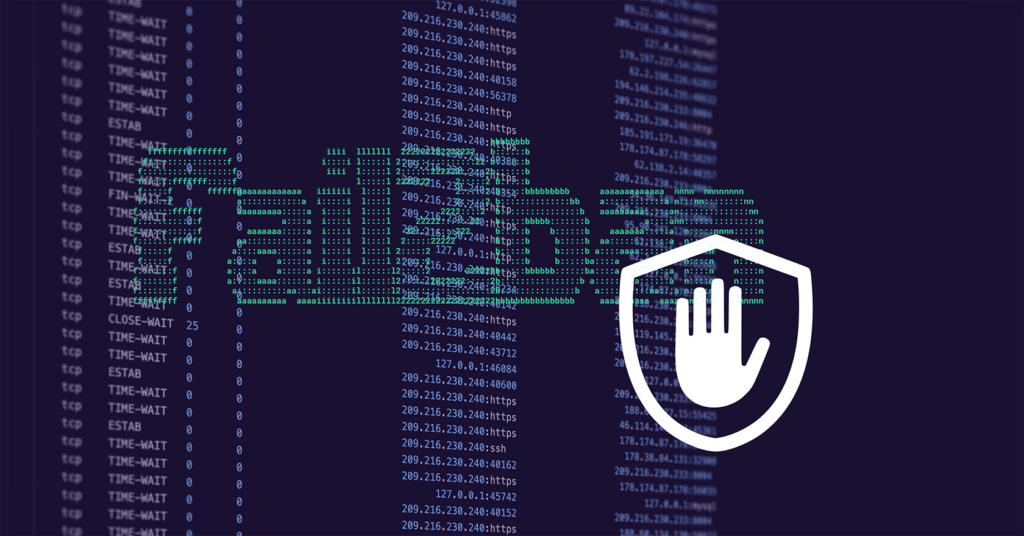
Fail2Ban is a widely used open-source intrusion prevention software that protects servers from brute-force attacks. It monitors log files (like SSH, SMTP, Apache) and bans IP addresses that show malicious signs, such as too many password failures and seeking for exploits. This tool is especially crucial for servers exposed to the internet, where they are more vulnerable to repeated login attempts and automated attacks.
Fail2Ban is a favorite in both small and large-scale server environments, lauded for its simplicity, effectiveness, and the extra layer of security it provides by mitigating common attack vectors.
Pros
- Effective Intrusion Prevention: By dynamically banning IPs, Fail2Ban provides an effective method to prevent brute-force attacks and unauthorized access.
- Customizable Rules and Filters: Users can create and modify rules and filters to suit their specific environment and security needs.
- Lightweight and Efficient: Fail2Ban is lightweight and does not require significant system resources, making it ideal for almost any server environment.
- Wide Applicability: It can be used with various services including SSH, FTP, SMTP, and more, enhancing its versatility.
Cons
- Log-Based Functionality Limitations: Since Fail2Ban relies on log files, any logging issues or delays can impact its effectiveness.
- Not a Standalone Security Solution: While effective against certain types of attacks, Fail2Ban should be part of a broader security strategy, as it does not cover all aspects of server security.
- Configuration Complexity: To get the most out of Fail2Ban, a user needs to understand and configure it properly, which can be challenging for beginners.
Conclusion
Fail2Ban is an essential tool in the arsenal of open-source security software, providing robust protection against common attack vectors such as brute-force attacks. Its ability to dynamically ban potentially malicious IP addresses makes it a key component in server security strategies. While it should be used in conjunction with other security measures, its efficiency, flexibility, and low resource demands make it a valuable asset for server administrators seeking to enhance their defense mechanisms against cyber threats.
9. Security Onion: The Comprehensive Network Security Monitor

Security Onion is a robust open-source platform designed for network security monitoring, intrusion detection, and log management. It’s a suite of tools that includes the likes of Snort, Suricata, Bro, and others, integrating them into a unified framework for monitoring network security. This platform is highly valued in the cybersecurity community for its comprehensive approach to network defense, offering deep visibility into network traffic and potential security threats.
Security Onion is widely used by security analysts, network administrators, and organizations looking for a holistic view of their network security. It’s particularly beneficial for large networks where tracking and analyzing network traffic comprehensively is crucial for maintaining security.
Pros
- All-in-One Solution: Security Onion combines several powerful security tools, offering an integrated solution for network monitoring and analysis.
- Deep Network Visibility: It provides deep insight into network traffic, aiding in the detection and investigation of security incidents.
- Customizability and Scalability: Users can tailor Security Onion to their specific needs and scale it to monitor large and complex networks.
- Active Community and Regular Updates: The tool benefits from a strong user community and regular updates, ensuring it stays relevant in the ever-evolving field of cybersecurity.
Cons
- Complexity and Resource Requirements: Security Onion’s comprehensive nature makes it complex to set up and manage, requiring significant resources and expertise.
- Steep Learning Curve: The platform’s depth and range of features present a steep learning curve, particularly for those new to network security monitoring.
- Demanding Hardware Requirements: To function effectively, especially in large-scale deployments, Security Onion requires robust hardware infrastructure.
Conclusion
Security Onion is a powerhouse in the realm of open-source security solutions, offering an unparalleled suite of tools for network security monitoring and intrusion detection. Its comprehensive approach provides deep network insights, essential for modern cybersecurity strategies. While it demands significant investment in terms of setup, management, and hardware, the level of network security intelligence it offers makes it an invaluable resource for organizations committed to maintaining rigorous network security standards.



